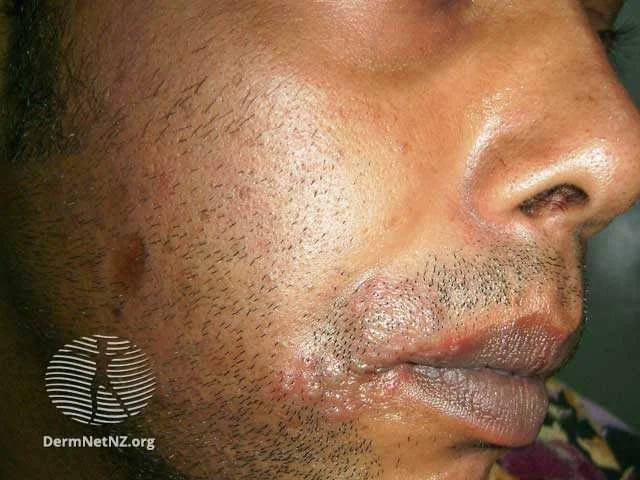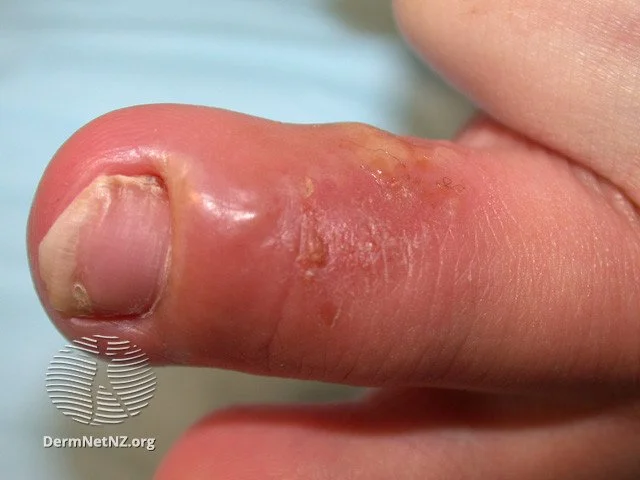
Cold Sores (Herpes Labialis, Fever Blisters)
An example of herpes labialis, which presents with small fluid-filled blisters, with surrounding redness.
Credit: DermNet NZ
What are cold sores?
Cold sores, commonly referred to as fever blisters, manifest as painful, fluid-filled blisters around the lips and oral region. Following their initial appearance, these blisters can burst, creating open, ulcer-like sores that eventually enter the healing phase. Their primary cause is the Herpes Simplex Virus type 1 (HSV-1), although HSV-2 can occasionally be responsible.
What causes cold sores?
The chief causative agent for cold sores is:
HSV-1: This is the primary virus behind cold sores, which is predominantly transmitted orally.
HSV-2: Less commonly, the HSV-2 strain, generally responsible for genital herpes, can lead to cold sores due to oral-genital contact.
How is it transmitted?
The virus predominantly spreads through:
Direct contact with an infected individual's saliva or the blister itself, often via actions like kissing.
Sharing items like utensils, towels, or lip balm with an infected person.
What are the symptoms of cold sores?
Upon manifestation, cold sores typically present as:
Fluid-filled blisters around the lips and mouth.
Pain, itching, or a burning sensation before the appearance of the blisters.
Swollen lymph nodes and a sore throat.
Fever, fatigue, or muscle aches.
How do I treat cold sores?
Though cold sores typically heal on their own within a few weeks, certain treatments can expedite the healing process and alleviate symptoms:
Topical antiviral creams
Over-the-counter pain relievers and creams
How do I prevent cold sores?
Preventative measures include:
Avoiding close contact, like kissing, with infected individuals, especially during an outbreak.
Refraining from sharing personal items such as lip balm or utensils.
Using sunscreen on the lips and face.
Reducing stress, as it can trigger outbreaks.
Herpes viral infections can also affect the finger and cause a painful swelling.
Credit: DermNet NZ
Herpes simplex infections can appear very blistery and inflamed when they have just appeared.
Credit: DermNet NZ



